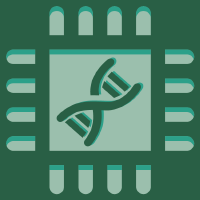Topic Menu
► Topic MenuTopic Editors


Optical Molecular Sensing and Imaging: Development and Applications
Topic Information
Dear Colleagues,
Determining molecular properties and functions is important for deeply understanding cell activities and developing novel therapeutic strategies. The optical sensing and imaging approaches are powerful tools for studying molecular events owing to the noninvasive and dynamic monitoring features. Label-free sensing approaches have shown distinct advantages in analyzing intrinsic molecular properties, such as mass, diffusion, and binding kinetics. Recently developed label-free single-molecule imaging approaches, including interferometric scattering microscopy, plasmonic scattering microscopy, and evanescent scattering microscopy, have further advanced this field by pushing beyond the ensemble average to reveal the statistical distributions of molecular properties in both pure buffer and complex biological media at the single molecular level. At the same time, the NIR fluorescence imaging approaches have gained significant attention in molecular imaging due to their deep tissue penetration, reduced scattering, and autofluorescence background. In this issue, we focus on the new development of highly sensitive label-free biosensing and imaging approaches and the NIR biosensing, and especially the integrated imaging approaches combining the label-free and NIR biosensors to reveal the multiple properties of biological processes. We invite research submissions capable of helping advance the field of optical molecular imaging and their applications for the efficient analysis of biological activities.
Dr. Pengfei Zhang
Dr. Rui Wang
Topic Editors
Keywords
- label-free biosensors
- optical molecular imaging
- surface plasmon resonance
- evanescent scattering
- cell imaging
- near-infrared imaging
- in vivo biosensing
Participating Journals
| Journal Name | Impact Factor | CiteScore | Launched Year | First Decision (median) | APC | |
|---|---|---|---|---|---|---|

Biosensors
|
4.9 | 6.6 | 2011 | 17.1 Days | CHF 2700 | Submit |

Sensors
|
3.4 | 7.3 | 2001 | 16.8 Days | CHF 2600 | Submit |

MDPI Topics is cooperating with Preprints.org and has built a direct connection between MDPI journals and Preprints.org. Authors are encouraged to enjoy the benefits by posting a preprint at Preprints.org prior to publication:
- Immediately share your ideas ahead of publication and establish your research priority;
- Protect your idea from being stolen with this time-stamped preprint article;
- Enhance the exposure and impact of your research;
- Receive feedback from your peers in advance;
- Have it indexed in Web of Science (Preprint Citation Index), Google Scholar, Crossref, SHARE, PrePubMed, Scilit and Europe PMC.

